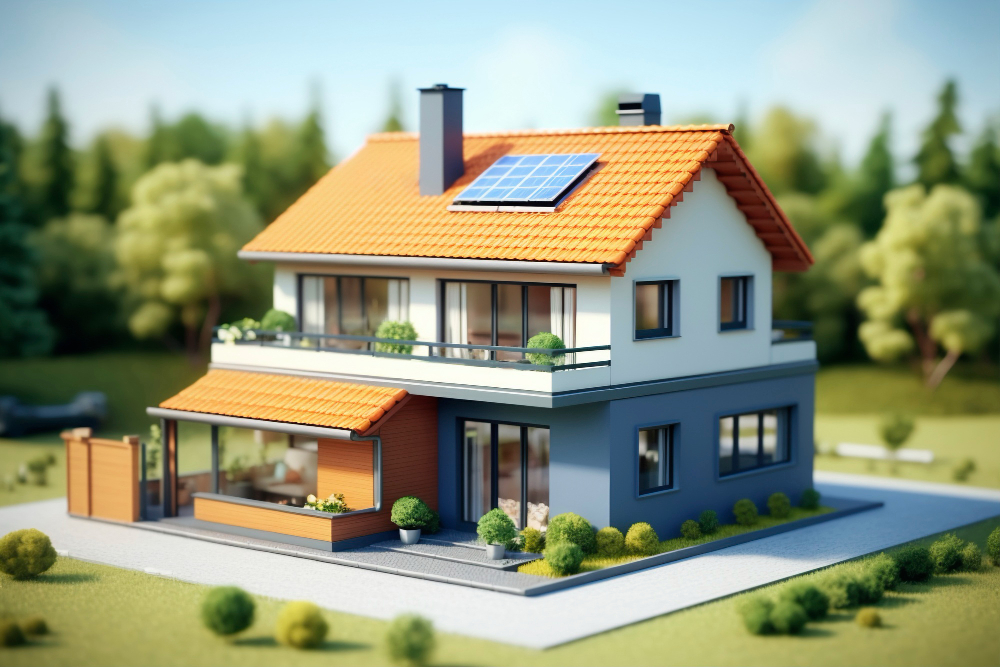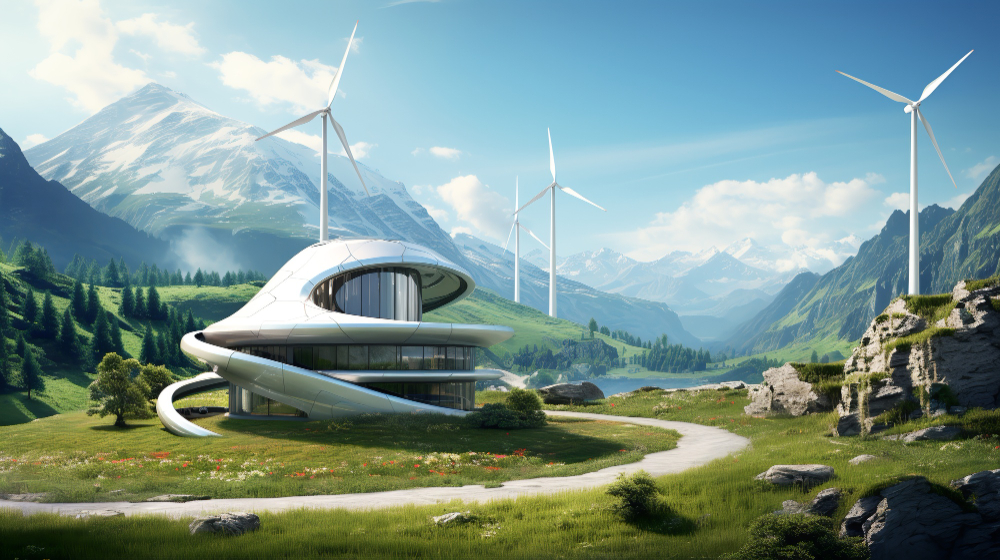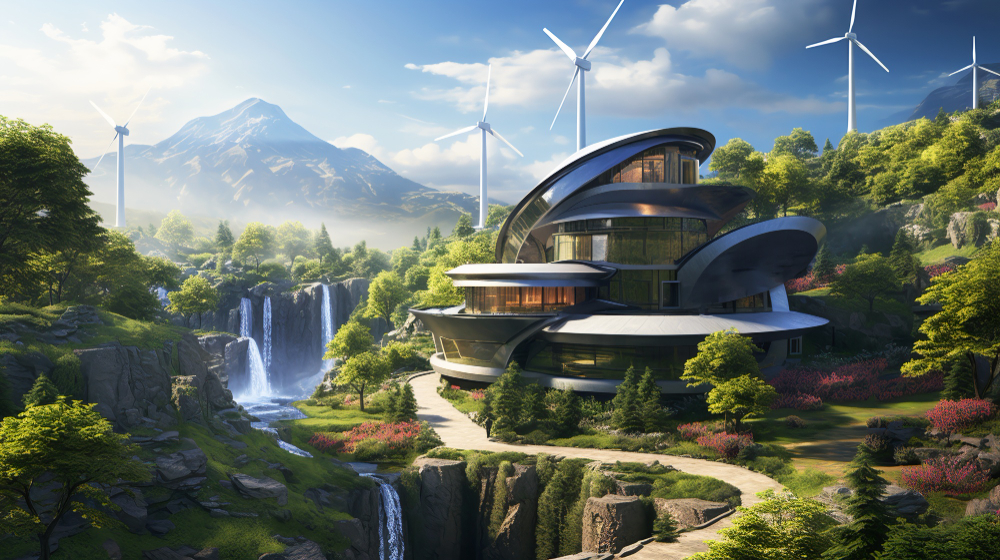The Role of Technology in Creating Sustainable and Energy-Efficient Home Designs
- 1 Introduction
- 1.1 Understanding Sustainability and Energy Efficiency in Home Designs
- 1.2 Technology’s Contribution to Sustainable and Energy-Efficient Home Designs
- 1.3 The Role of Outdoor Shutters in Sustainable Home Designs
- 1.4 Storm Shutters: Protection and Energy Efficiency
- 1.5 Solar Roller Blinds: Harnessing Renewable Energy
- 1.6 Bifold Shutters: Flexible Design and Energy Efficiency
- 1.7 Plantation Shutters: Aesthetic Appeal and Energy Efficiency
- 2 Practical Steps to Implement Technology-Driven Home Designs
- 3 Conclusion
Introduction
In recent years, there has been a growing emphasis on sustainable and energy-efficient home designs. As the world becomes more aware of the environmental impact of our actions, it is important to ensure that our homes are designed in a way that minimizes energy consumption and reduces our carbon footprint. One of the key factors in achieving this goal is the integration of technology into home design. Specifically, outdoor shutters, storm shutters, solar roller blinds, bifold shutters, and plantation shutters play a crucial role in creating sustainable and energy-efficient homes. In this blog post, we will explore the benefits of incorporating these elements into our home designs and discuss how technology can be leveraged to achieve these goals.
Understanding Sustainability and Energy Efficiency in Home Designs
Before delving into specific technologies, it is important to understand the concepts of sustainability and energy efficiency in the context of home design. Sustainability refers to the ability to meet present needs without compromising the ability of future generations to meet their own needs. Energy efficiency, on the other hand, focuses on minimizing energy wastage by using less energy to achieve the same results. Sustainable and energy-efficient home designs are crucial for the future of housing due to their environmental, economic, and health benefits. By reducing energy consumption, these designs help lower carbon emissions, save on energy costs, and create healthier living environments. Adopting sustainable and energy-efficient home designs can have a significant impact on reducing our ecological footprint and mitigating climate change.
Technology’s Contribution to Sustainable and Energy-Efficient Home Designs
Advancements in technology have revolutionized the way we design and construct homes, enabling us to create spaces that are not only aesthetically pleasing but also sustainable and energy-efficient.
One technology that has had a significant impact is smart home systems. These systems allow homeowners to monitor and control the energy usage within their homes. By automating processes such as heating, cooling, and lighting, smart home systems help optimize energy consumption. For example, sensors can detect when a room is unoccupied and adjust the temperature or lighting accordingly. Additionally, smart home systems can integrate with renewable energy sources like solar panels, further reducing reliance on non-renewable energy.
Automation and sensors also play a crucial role in optimizing energy efficiency. For instance, motorized outdoor shutters can automatically adjust based on the angle of the sun, allowing for optimal natural light while reducing heat gain and glare. Similarly, sensors can detect changes in weather conditions and automatically activate storm shutters to protect homes from extreme weather events.
The Role of Outdoor Shutters in Sustainable Home Designs
Outdoor shutters serve multiple purposes in sustainable home designs. They provide privacy, control natural light and airflow, and act as an additional layer of insulation. By adjusting the angle of outdoor shutters, homeowners can optimize natural light levels, reducing the need for artificial lighting during daylight hours. Furthermore, outdoor shutters can help regulate indoor temperatures by minimizing heat gain or loss depending on the weather conditions outside. This reduces the need for excessive heating or cooling, leading to energy savings.
Innovative designs such as adjustable louvers and smart outdoor shutters take energy efficiency to the next level. These shutters can automatically adjust their position based on factors like the angle of the sun, time of day, or temperature. By optimizing natural light and heat, these shutters contribute significantly to energy savings while enhancing the overall aesthetics of a sustainable home.
When choosing outdoor shutters, it is important to consider factors such as material, durability, and maintenance requirements. Eco-friendly materials like sustainably sourced wood or recycled materials should be prioritized. Additionally, regular maintenance and inspection should be carried out to ensure optimal functionality and longevity.
Storm Shutters: Protection and Energy Efficiency
Storm shutters play a critical role in protecting homes during extreme weather events such as hurricanes, tornadoes, or severe storms. However, their benefits extend beyond protection. Storm shutters can significantly improve the energy efficiency of homes, especially in regions prone to extreme weather conditions.
During storms, high winds and flying debris can cause windows to break, leading to increased pressure on the interior of the home and potential damage. By installing storm shutters, homeowners can protect their windows from these external forces and prevent damage to their homes. Additionally, storm shutters act as an added layer of insulation, reducing heat transfer and air leakage, which leads to energy savings.
When selecting storm shutters, factors such as material, strength, and ease of installation should be considered. Popular materials for storm shutters include aluminum, steel, or impact-resistant polymers that can withstand high winds and flying debris. It is important to ensure that the chosen storm shutters meet local building codes and are installed correctly to achieve maximum efficiency.
Solar Roller Blinds: Harnessing Renewable Energy
Solar roller blinds offer a unique opportunity to harness renewable energy within the constraints of home design. These blinds feature photovoltaic cells that convert sunlight into electricity, which can be used to power various electrical devices in the home or be fed back into the grid for financial incentives. By integrating solar roller blinds into home designs, homeowners can reduce their reliance on non-renewable energy sources and contribute to a more sustainable energy grid.
Solar roller blinds not only generate renewable energy but also enhance energy efficiency within the home. By blocking out excessive sunlight during the summer months, these blinds help reduce heat gain, lessening the load on cooling systems and reducing energy consumption. Furthermore, in colder months, solar roller blinds can be adjusted to allow sunlight in, increasing passive solar heating and reducing the need for artificial heating.
When choosing solar roller blinds, factors such as efficiency, durability, and integration options should be considered. Opting for high-efficiency photovoltaic cells and investing in well-constructed blinds will maximize energy generation and ensure longevity.
Bifold Shutters: Flexible Design and Energy Efficiency
Bifold shutters offer homeowners flexibility in both design and energy efficiency. These shutters consist of multiple panels that fold together smoothly, allowing for uninterrupted views and an open feel when desired. By incorporating bifold shutters into home designs, homeowners can have the best of both worlds – privacy, protection, and energy efficiency combined with adaptable and versatile living spaces.
Bifold shutters enhance energy efficiency by minimizing heat transfer and maximizing natural light. By closing the shutters, homeowners can effectively insulate their homes and prevent heat loss during colder months. During warmer months, the shutters can be partially or fully opened, allowing for natural ventilation and reducing the need for mechanical cooling.
When selecting bifold shutters, considerations such as material, design, and insulation properties should be taken into account. Opting for materials with high thermal resistance and insulation properties, such as uPVC or timber, will enhance energy efficiency. Additionally, choosing designs that allow for the maximum flow of natural light will further contribute to energy savings.
Plantation Shutters: Aesthetic Appeal and Energy Efficiency
Plantation shutters offer both aesthetic benefits and energy efficiency. These shutters feature wide slats that can be adjusted to control privacy, natural light, and airflow. Plantation shutters not only enhance the visual appeal of a home but also contribute to energy savings.
By adjusting the slats, homeowners can optimize natural light levels, reducing the need for artificial lighting during daylight hours. Furthermore, plantation shutters act as an additional layer of insulation, minimizing heat transfer and enhancing energy efficiency. During colder months, closing the shutters can help prevent heat loss, while during warmer months, adjusting the slats can allow for natural ventilation, reducing the need for mechanical cooling.
When selecting plantation shutters, factors such as material, durability, and insulation properties should be considered. Opting for materials like timber or composites that offer good insulation properties will maximize energy efficiency. Additionally, proper maintenance and regular cleaning will ensure optimal functionality and longevity.
Practical Steps to Implement Technology-Driven Home Designs
To implement technology-driven home designs, homeowners can follow these practical steps:
- Assess energy needs and goals: Determine the specific energy needs and goals for your home, considering factors such as size, location, and climate.
- Research available technologies: Research the various technologies available for sustainable and energy-efficient home designs, such as outdoor shutters, storm shutters, solar roller blinds, bifold shutters, and plantation shutters. Understand their functionalities, benefits, and potential integration options.
- Consult with professionals: Seek advice from architects, contractors, or specialists who have experience in sustainable home design. They can provide expert guidance tailored to your home’s unique needs.
- Perform an energy audit: Conduct an energy audit of your home to identify areas of improvement. This audit can help determine which technologies will be most beneficial and guide your decision-making process.
- Set a budget: Determine a budget for integrating technology-driven home designs, considering both upfront costs and long-term savings.
- Choose energy-efficient materials: When selecting outdoor shutters, storm shutters, solar roller blinds, bifold shutters, and plantation shutters, prioritize materials that offer good insulation properties and are sourced sustainably.
- Install and monitor technologies: Once you have chosen the appropriate technologies, have them professionally installed. Regularly monitor and maintain these technologies to ensure optimal performance and energy savings.
- Educate yourself and family members: Educate yourself and your family members about the benefits and usage of the implemented technologies. Encourage responsible behavior in terms of energy consumption.
Conclusion
In conclusion, technology plays a vital role in creating sustainable and energy-efficient home designs. By incorporating technologies such as outdoor shutters, storm shutters, solar roller blinds, bifold shutters, and plantation shutters, homeowners can optimize energy usage, reduce carbon emissions, and create comfortable and eco-friendly living spaces. Sustainable and energy-efficient home designs not only benefit the environment but also provide economic savings and improve the quality of life for residents. By taking practical steps to implement these technology-driven designs, homeowners can contribute to a more sustainable future while enjoying the numerous benefits of energy-efficient homes.





















